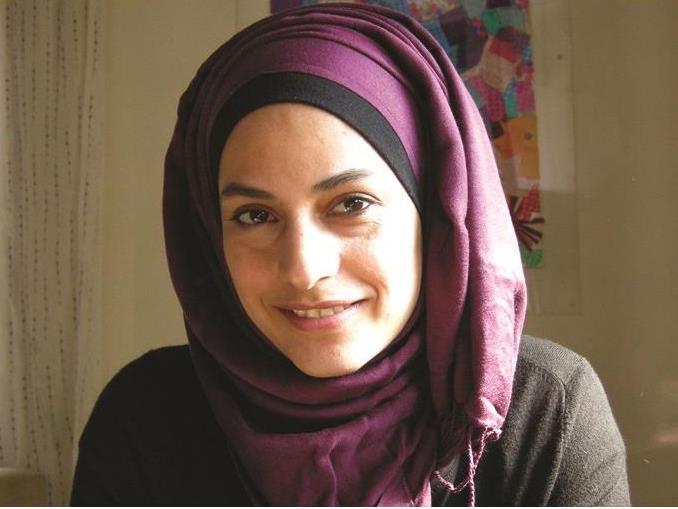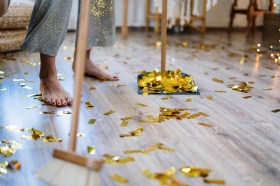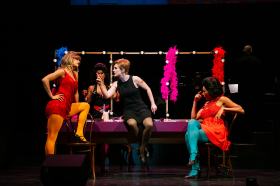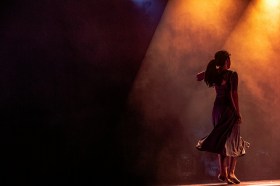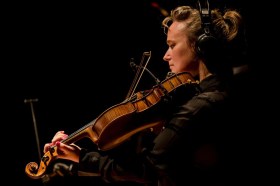Marwa al-Sabouni closes the 2017 Perth Writers Festival. Photograph (c) Ghassan Jansiz via Perth Writers Festival.
Marwa al-Sabouni, architect from the city of Homs in Syria and author of The Battle for Home, gave a most refreshing closing address at the Perth Writers Festival 2017. To her view of the way architecture relates to war and peace she brought a youthful enthusiasm and inspiration rising out of love of her profession and love of her city. Architecture, with its visual perspective, proved to be an unusual and powerful way to bring us, on the other side of the world, to engage with the events in Syria and to care.
Marwa presented before-and-after slides showing the devastation resulting from war, and then moved on to a general discussion of the impact of architecture on life with its different layers of civilisation, pointing, for instance, to the distinctive Ottoman and Mameluke styles. Before the war, 40 per cent of the Syrian population lived in slums in peripheral areas around the cities. One of the hazards of this blind urbanism is absence of the aesthetic. But beauty satisfies an essential psychological need and is part of the way people relate to their surroundings. It is morally inspiring and can be an aspect of belonging and sharing. She quoted Alain de Botton’s ‘architecture of happiness’.
How, she asked, does architecture contribute to the city? What matters is the balance between housing and nature, and between religious and lay life. This has always been so. The al-Nouri mosque, on the site of the ancient Temple of the Sun, sits at the heart of the Old City. In more recent times, the souk was very close to it at one end. Less than 200 metres away is the Church of Virgin Mary of the Belt, which dates back to 59 BCE and had a Roman cellar beneath it.
The mosque was rebuilt in the 18th century. However, architecture can play a role in reconciling or separating people and their surroundings, and rebuilt mosques and churches tend to be alienated from day-to-day life. Their doors are now locked during the week. A slide showing the current mosque — extravagant, closed and guarded — makes it clear that the huge surrounding space acts as a barrier between the place of worship and the people it was meant to serve.
A similar pattern of alienation applies to the city’s commercial places. Where the souks were once alive with throngs of people and anything up to 5,000 shops close together, their replacements are impersonal upmarket malls. The removal of the relationship between merchant and customer has even contributed to further alienation between the religions represented within the city. The same has been the case with the social classes, which mingled together happily in the old souks.
In concluding, Marwa al-Sabouni emphasised that architecture needs to honour past and present as well as material productivity and spiritual need. Fortunately, there are still some places that reflect this; she showed the slide of the Jupiter Temple framing the entrance to the souk. ‘Beauty’, she said,’ lies at the heart of function’.
Marwa al-Sabouni’s address brought us back into connection with what is happening in the world. Despite the horror of the destruction in her city, she showed how hope can and must spring from the worst experiences. In its passion and visual power, her address proved a fitting ending to the 2017 Writers Festival, with its theme of ‘big visions and bold ideas’.
Rating: 4 1/2 stars out of 5
Closing Address, featuring Marwa al-Sabouni
Speaker: Marwa al-Sabouni
Octagon Theatre
Sunday 26 February 2017 7.00pm
PIAF 2017

